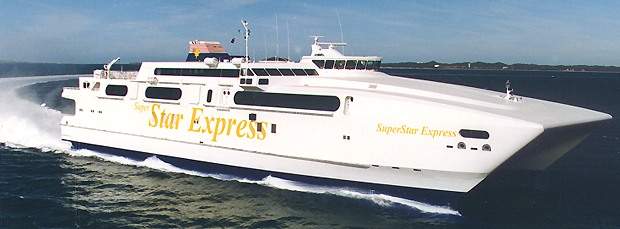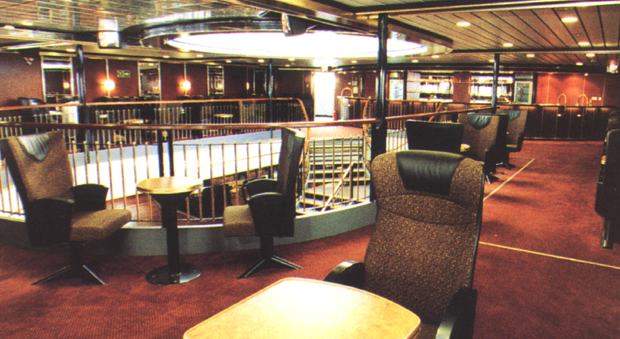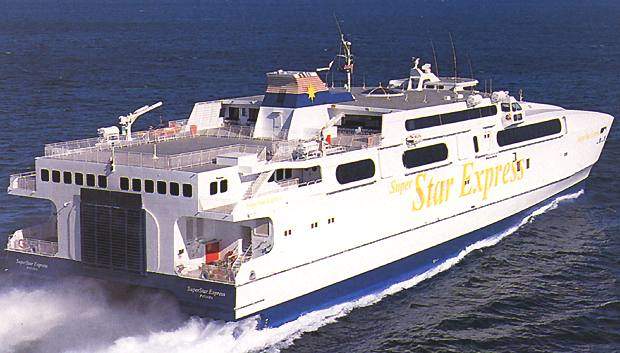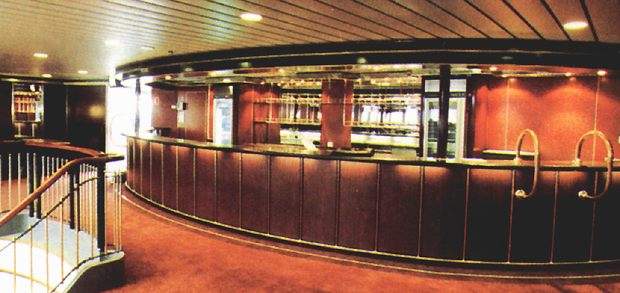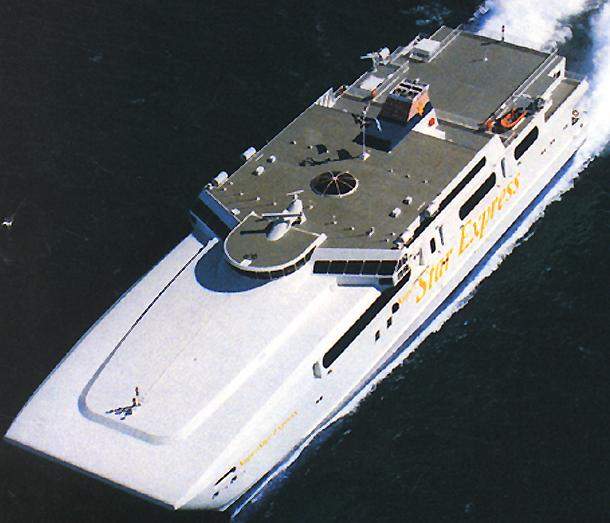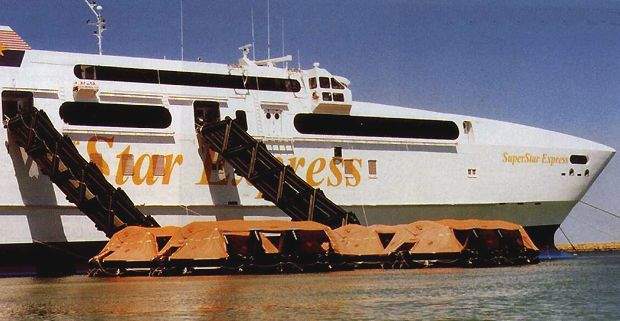The SuperStar Express is the fourth Auto Express 82 type catamaran delivered by Austal Ships. It was built for Star Cruises of Singapore to make the crossing between Butterworth and Langkawi island, Malaysia. It is at present operated by P&O European Ferries on the Portsmouth – Cherbourg cross-channel route. Crossing time is 2 hours and 45 minutes.
Design
The SuperStar Express is 82.3m in length overall, and 70.7m at the waterline. The upper superstructure has been extended outboard and aft compared with the three earlier Auto Express 82-type fast ferries.
It has a moulded breadth of 23m and a hull draft of 2.8m. It has a moulded depth of 6.7m and a draught without T-foils, of 2.8m. It has a maximum dead-weight of 340t.
During trials with an Ocean Leveller ride control system fitted, a speed of 38.5 knots was recorded at 90 per cent of the 6,500kW engine at 1,250rpm. A maximum speed of 41 knots was achieved at the 100 per cent level.
Facilities
Vehicles enter the SuperStar Express through a stern loading ramp and occupy a position along the centreline. There is sufficient capacity for 107 cars on the main deck, and a further 68 cars on the mezzanine deck giving a total of 175 cars. Alternatively, the ferry can accommodate 70 cars and ten coaches.
Two decks of passenger accommodation lie above the vehicle and machinery decks. All these decks are interlinked by a central staircase, below an atrium and dome. The SuperStar Express has a capacity to handle 668 passengers on the main deck, and a further 204 on the upper deck. The main accommodation deck contains 290 seats in the forward lounge and restaurant area, as well as 84 seats amidships. There are also 294 seats in an aft karaoke lounge. On the upper deck there is a large saloon with 192 seats. Crew capacity of the ship is 24.
The SuperStar Express also contains a shop, a video arcade and a children’s play area. The passengers can be entertained and informed by an on-board audio-visual broadcasting system. By the use of individual headsets, this can broadcast up to four channels.
Propulsion
The SuperStar Express is powered by four MTU 20V 1163 TB73L diesel engines with a power rating of 6,850kW each when running at 1,250rpm. These engines are linked to four Reintjes VLJ 4431 gearboxes. This was a notable departure from the original Auto Express 82 ferries, which was powered by 20V 1163 TB73 engines. Auxiliary power is provided by four MTU 8V 183 TE52 units, which can provide a total of 269kW when running at 1,500rpm.
Propulsion is carried out by four KaMeWa waterjets. The 112 SII waterjets were selected in accordance with previous designs.
Automation
The SuperStar Express is equipped with MTU MCS-5 monitoring and control system. This enables the extensive monitoring of systems and machinery throughout the ship, and is controlled from the engineer’s station.
The Austal Marine Link system has also been installed. This system is used to carry out extensive control and monitoring of the safety systems on the SuperStar Express, such as fire and sprinkler pump control, engine and car deck ventilation systems and the monitoring of the watertight and fire doors.
The wheelhouse contains a fully integrated Kelvin Hughes navigation equipment. This includes multi-feature display, electronic chart navigation equipment and twin ARPA radars. A voyage data recorder is installed, which can be used to gather pertinent information from all bridge instrumentation. A video time-lapse recorder is also located on the bridge at the captain’s, the engineer’s and the wing stations.

